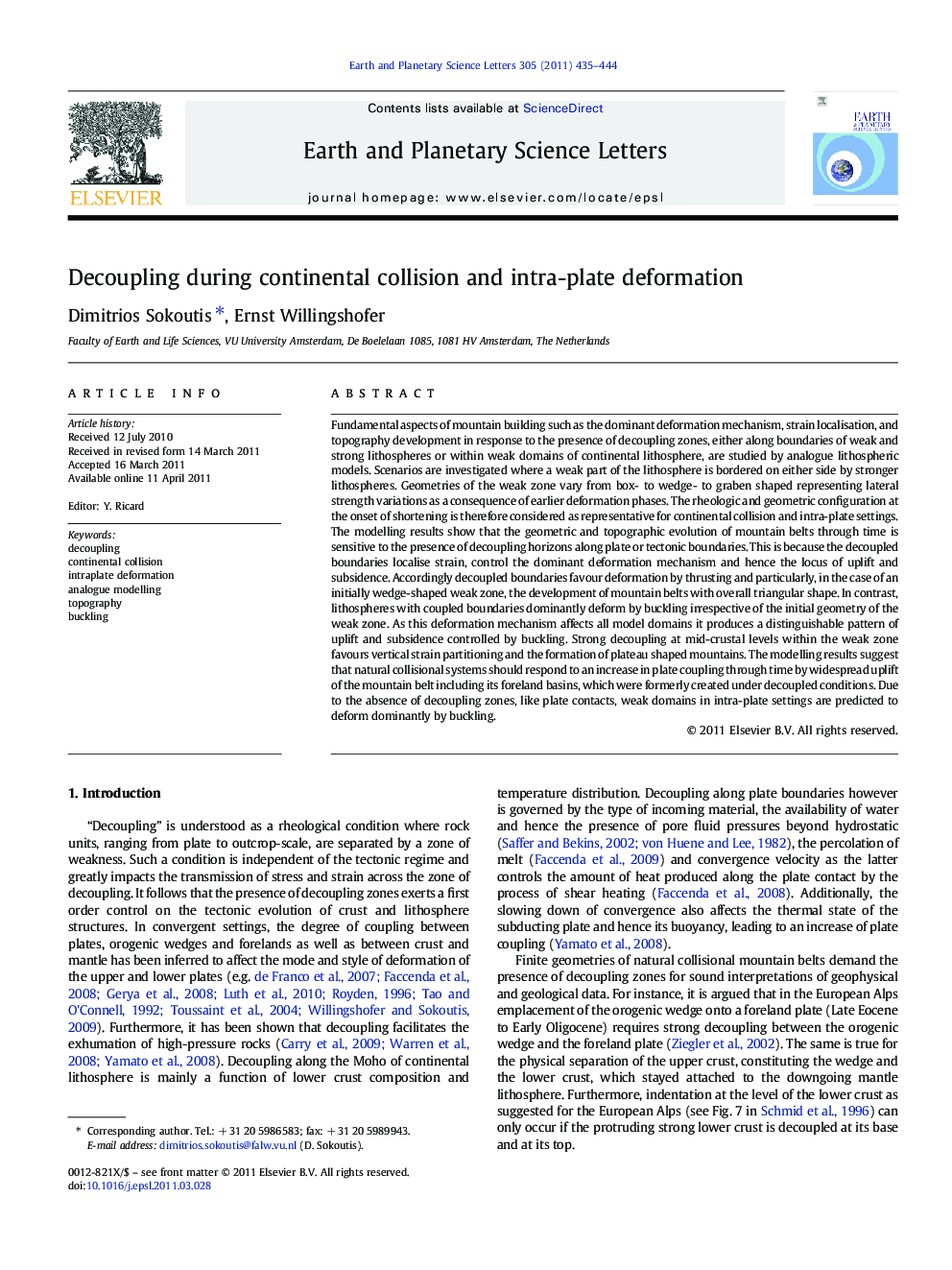| کد مقاله | کد نشریه | سال انتشار | مقاله انگلیسی | نسخه تمام متن |
|---|---|---|---|---|
| 6430819 | 1634829 | 2011 | 10 صفحه PDF | دانلود رایگان |

Fundamental aspects of mountain building such as the dominant deformation mechanism, strain localisation, and topography development in response to the presence of decoupling zones, either along boundaries of weak and strong lithospheres or within weak domains of continental lithosphere, are studied by analogue lithospheric models. Scenarios are investigated where a weak part of the lithosphere is bordered on either side by stronger lithospheres. Geometries of the weak zone vary from box- to wedge- to graben shaped representing lateral strength variations as a consequence of earlier deformation phases. The rheologic and geometric configuration at the onset of shortening is therefore considered as representative for continental collision and intra-plate settings. The modelling results show that the geometric and topographic evolution of mountain belts through time is sensitive to the presence of decoupling horizons along plate or tectonic boundaries. This is because the decoupled boundaries localise strain, control the dominant deformation mechanism and hence the locus of uplift and subsidence. Accordingly decoupled boundaries favour deformation by thrusting and particularly, in the case of an initially wedge-shaped weak zone, the development of mountain belts with overall triangular shape. In contrast, lithospheres with coupled boundaries dominantly deform by buckling irrespective of the initial geometry of the weak zone. As this deformation mechanism affects all model domains it produces a distinguishable pattern of uplift and subsidence controlled by buckling. Strong decoupling at mid-crustal levels within the weak zone favours vertical strain partitioning and the formation of plateau shaped mountains. The modelling results suggest that natural collisional systems should respond to an increase in plate coupling through time by widespread uplift of the mountain belt including its foreland basins, which were formerly created under decoupled conditions. Due to the absence of decoupling zones, like plate contacts, weak domains in intra-plate settings are predicted to deform dominantly by buckling.
Journal: Earth and Planetary Science Letters - Volume 305, Issues 3â4, 15 May 2011, Pages 435-444